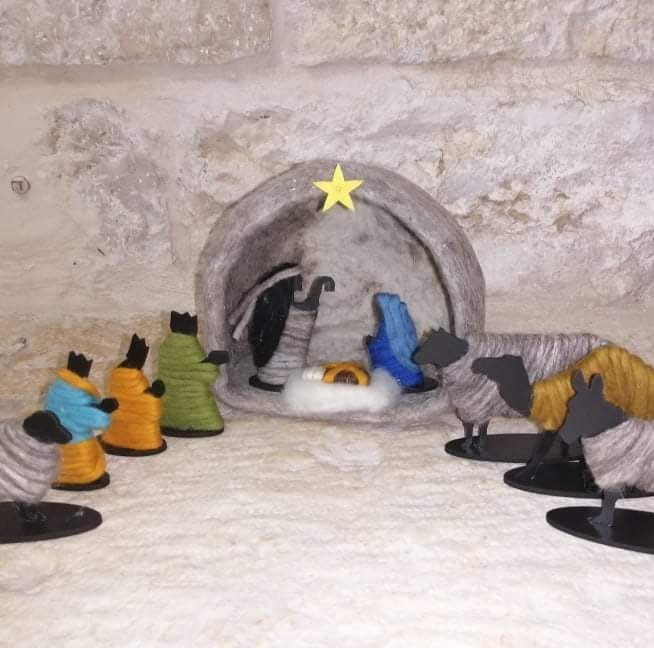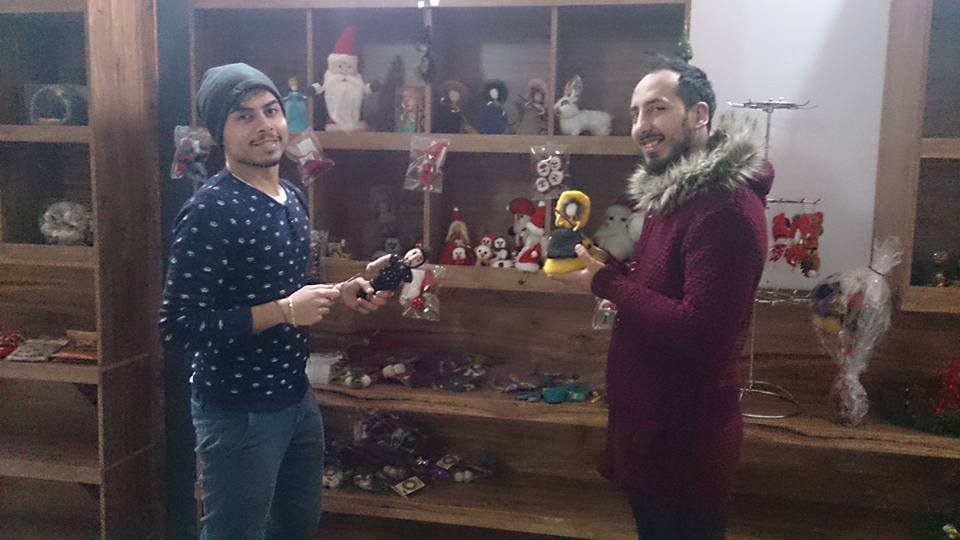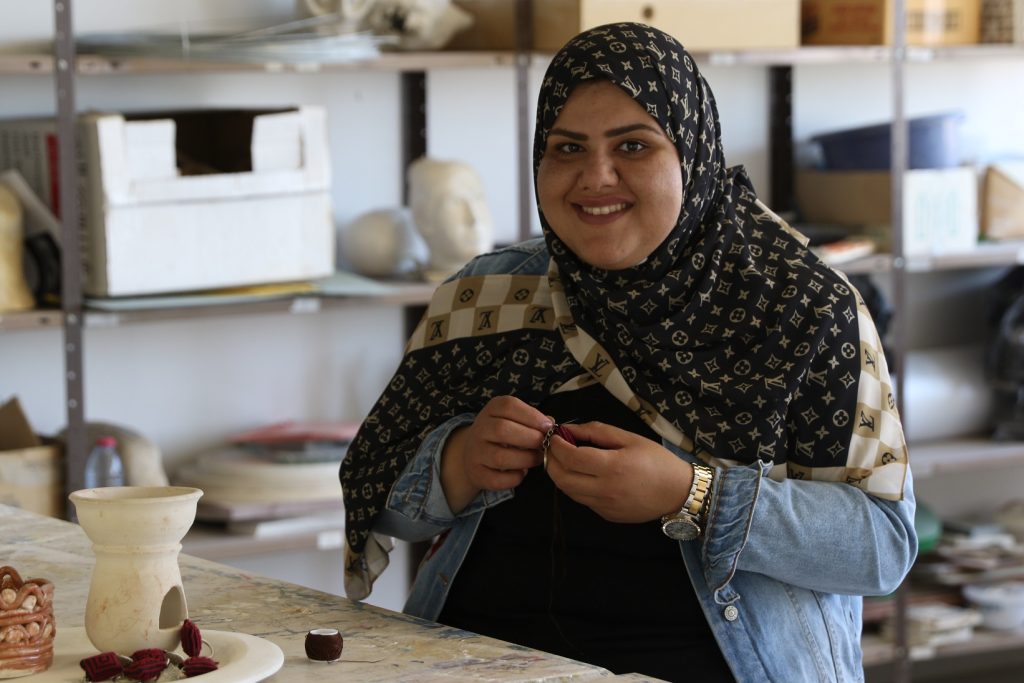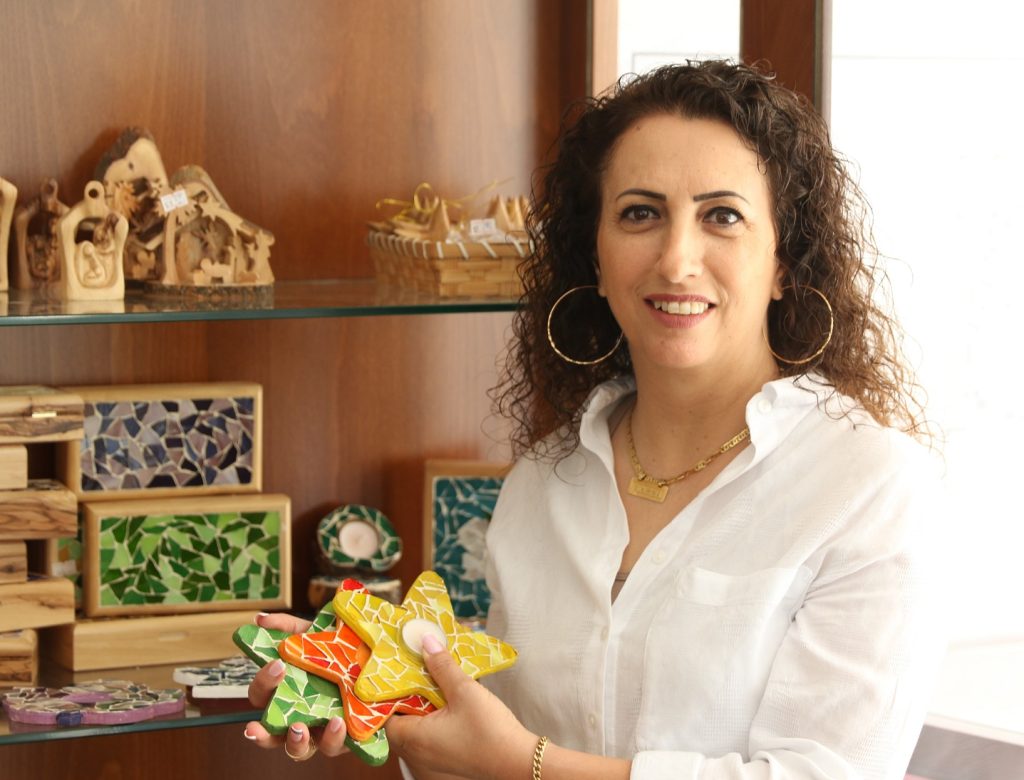Ma’an lil-Hayat – L’Arche Bethlehem (معا للحياة)

Ma’an lil-Hayat – L’Arche Bethlehem
Ma’an lil-Hayat Center was established in 2009 in Bethlehem. It is considered the Palestinian partner for L’Arche International that seeks to create safe spaces for people with intellectual disabilities. The union brings together more than 160 partners worldwide who share principles of pluralism and acceptance, embracing all differences far away from gender, nationality, ethnicity and religious prejudices. The centre is open for students over the age of 16 with various intellectual disabilities such as Down syndrome, mental retardation and learning difficulties.
The Ma’an Center provides learning and integration opportunities through vocational training programs specialising in manufacturing various products using wool felting techniques, natural wool from Palestinian local farmers. The centre is considered the first and only centre in Palestine that specialises in this industry. In the beginning, they made religious souvenir products like Christmas tree ornaments and the nativity grotto that could be sold to foreign tourists.
Over the past years, the centre’s staff has improved their accuracy, quality and speed. In contrast, the decline of tourism worldwide during the coronavirus pandemic prompted them to design new products that could be marketed internationally and locally. The centre has started manufacturing bags, paintings, and decorative items and gadgets for kitchen utensils.
The Ma’an Center currently serves 40 male and female students in its two branches. The centre provides a safe place for students to stay in school from 8 a.m. to 2 p.m. Their schedule is divided into various activities that seek to achieve the centre’s goals: raising the self-esteem of people with intellectual disabilities, integrating them into the community, increasing their ability to be self-dependent, and developing their creative and artistic skills. The centre also educates parents on ways to deal with their children and change society’s attitude towards people with mental disabilities.
The Center employs 12 staff members and plans to establish a guesthouse to achieve financial sustainability and create job opportunities for its students. In one of its most important achievements, the Center collaborated with Inad Theater, Beit Jala, to train and empower its students using the tools of drama and theatre. Students performed in a play that toured several Palestinian cities and participated in a theatre festival in Germany.
The Center relies on exporting its goods to various European countries. The Center participates in most local bazaars and markets held annually, such as Christmas markets in Bethlehem. Although these markets are weak in terms of sales, they are always keen to spread the Center’s message to local communities.
مركز معاً للحياة
تأسس مركز معاً للحياة في مدينة بيت لحم سنة 2009، وهو فرع لجمعية اتحاد الآرش العالمي الذي يسعى لخلق مساحات آمنة للأشخاص ذوي الإعاقة العقلية. يستقبل المركز الطلبة من الذكور والإناث الذين تزيد أعمارهم عن 16 عاماً من ذوي الإعاقات الذهنية المختلفة مثل متلازمة داون والتأخر العقلي وصعوبات التعلم.
مصطلح “لارش” في اللغة الفرنسية يعني سفينة ومن هنا تأتي فكرة الإتحاد الذي يجمع أكثر من 160 شريكاً حول العالم يتشاركون في مبادئ التعددية وتقبل الآخر. المؤسسات الأعضاء في اتحاد الآرش يتشاركون ثقافة واحدة نابعة من قلوبهم تحتضن جميع الاختلافات بعيداً عن التمييز ما بين الجنسين، الجنسيات، الأعراق والأديان.
يوفّر مركز معاً للحياة لطلابه فرصاً للتعلّم والاندماج من خلال برامج التأهيل المهني التي تختص في صناعة المنتجات المختلفة باستخدام تقنية اللّباد من صوف الغنم الطبيعي. يعتبر المركز الأول والوحيد في فلسطين الذي يحترف هذه الصنعة. في البداية، كان المركز يصنّع المنتجات الصوفية التي تأخذ شكل الرموز الدينية كمغارة الميلاد وزينة شجرة عيد الميلاد وغيرها من التحف التي يمكن بيعها للسياح الأجانب.
خلال السنوات الماضية، اكتسب طاقم عمل المركز من الحرفيين والطلاب الخبرة التي رفعت من دقة وجودة وسرعة العمل. في المقابل، تدهور حركة السياحة عالمياً خلال جائحة كورونا دفعهم للتفكير في تصميم منتجات جديدة بعيدة عن الرموز الدينية والسياحية، يمكن تسويقها دولياً ومحلياً. بدأ المركز في صناعة الحقائب واللوحات الفنية وقطع الزينة لأدوات المطبخ وغيرها.
يحتضن مركز معاً للحياة حالياً أربعين طالباً وطالبة في مقرّه الأساسي في وسط مدينة بيت لحم، وفرعه الثاني في قرية دار صلاح شرقي المدينة. يوفّر المركز مكاناً آمناً للطلاب بديلاً عن المدرسة يداوم فيه الطلاب من الساعة الثامنة صباحاً حتى الثانية ظهراً. جدول الدوام مقسّم لفعاليات مختلفة تسعى لتحقيق غايات المركز: رفع ثقة الأشخاص ذوي الإعاقات الذهنية في أنفسهم، دمجهم في المجتمع المحلي، زيادة قدرتهم على الاعتماد على أنفسهم، تطوير مهاراتهم الإبداعية والفنية. بالإضافة إلى ذلك، يعمل المركز على توعية الأهالي بالأساليب المناسبة للتعامل مع أبنائهم وتغيير نظرة المجتمع تجاه ذوي الإعاقة العقلية.
يعمل في المركز 12 موظفاً ويخططون لإنشاء بيت ضيافة كمشروع تابع للمركز، يساعدهم في تحقيق الاستدامة ويوفّر فرص عمل لطلابهم من ذوي الإعاقات. في واحد من أهم مشاريعه، تعاون المركز مع مسرح عناد – بيت جالا، ضمن برامج المسرح الدامج لتدريب طلابه وتمكينهم باستخدام أدوات الدراما والمسرح وقاموا بالتمثيل في مسرحية بائعة الكبريت مع الفنان خالد المصو، التي تجوّلت في عدة مدن فلسطينية وقامت بالمشاركة في مهرجان مسرحي في ألمانيا.
يعتمد المركز في الترويج والتسويق لبيع منتجاته على الطلبيات الخارجية والتصدير لدول أوروبية مختلفة. يشارك المركز في معظم البازارات والأسواق المحلية التي تقام سنوياً كأسواق عيد الميلاد في بيت لحم. وبالرّغم من ضعف هذه الأسواق من ناحية المبيعات، ولكنهم يحرصون دوماً على التواجد لنشر رسالة المركز للمجتمعات المحلية.



